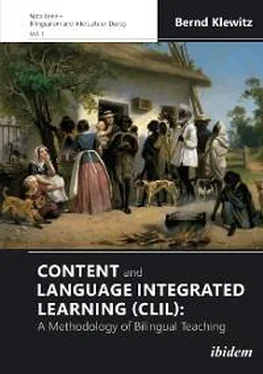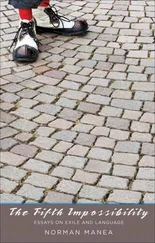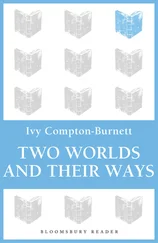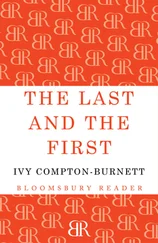Considering both input and output hypotheses, language learning is then seen as a social process guided by interaction and fostered by cognition. In the tradition of Lev Vygotsky’s Zone of Proximal Development (Vygotsky: 1962, see above) the origins of cognitive and mental activities are embedded within the social domain. The guiding concept here is the ZPD within which learning is enabled by problem-solving activities of learners if these are acting supported by more knowledgeable peers or teachers.
Writing about the relation of thought and language ( Thought and Language 1962), Vygotsky devises a concept of (language) development and combines with it a theory of education. More based on common sense and observation than systematic scientific research, he monitored children learning to talk and solving problems. His concept of ZPD not only influenced contemporary Soviet psychologists but also elicited comments by leading Western educators like Jean Piaget and was only much later—and in fact after the end of the Cold War—known and appreciated in mainstream learning theories.
A further step needs to be discussed in this context. With the growing importance of cognition, the aim to acquire curricular content at the same time as language itself is connectable to language awareness. In the United Kingdom, for example, this process was embedded in the challenge to enhance literary education where children’s needs of language learning needed to be met (cf. the findings of the Bullock-Commission in Great Britain 1972-75). In order to link linguistic demands and content challenges it is generally expedient to realize that pragmatic speech functions and macro-operations correspond with each other and are intensified by reciprocal support—as expressed in task-verbs like describe , illuminate , assess , conclude etc. Content-based teaching, according to the language-across-the-curriculum approach ( LAC; cf. Meisel: 160 ff), has always to be considered as language teaching, because linguistic and cognitive development show a close connection. The LAC approach has been interpreted as a specific version of Teaching English as a Foreign Language (TEFL) and is also closely associated with CLIL and immersion programs (cf. ibid.: 161).
Interdisciplinary teaching in the sense of LAC is not only of professional benefit for instructors but also facilitates the enhancement of literary competence in the classroom discourse where more often than not certain gaps have become conspicuous. This is particularly true for students with a migration background, but deficits in the “ language of schooling ” are visible in mainstream cohorts as well. The aim to develop aspects of academic language in all subject areas is still as much part of the aforementioned theory of practice as it is not consistently part of everyday classroom routines. Some initiating guidelines for this LAC approach have been explored by language-sensitive curricula, namely “ 40 learner tools ” by the German teacher trainer and physics professor Josef Leisen 8, but a comprehensive methodology does not seem to be available so far (cf.: Wolff 2011: 81).
“ Language of schooling ”, however, remains important within the constructivist theory of encouraging students to creatively build their own learning cycles and thus—at least in the long run—become their own teachers. This is at the heart of Visible Learning(VL), which according to the aforementioned NZ educationalist John Hattie, occurs when teachers see learning through the eyes of their students and help them close the gap between their prior knowledge and the intended learning outcomes, language- or content-wise. Hattie’s concept of VL with Direct Instruction as one of its key components (see above) was developed more than ten years ago and has since become a world-wide influential approach to effective teaching and successful learning (cf. De Florio: 2016). It is based on his meta-analyses with data obtained from more than 300 million students comparing developments from the Australian, American and British education systems (Visible Learning 2009).
Key factors like cognitive task analysis , scaffolding , reciprocal teaching , feedback , direct instruction and behavior organizers will be discussed in detail in the context of dimensions of bilingual teaching (chapter 5 & 6), but at this stage it should be noted that three kinds of achievement factors played a major role for successful learning according to the data collected, i.e. feedback, student expectations and formative evaluation. These aspects represent strategies of best teaching practice and are instrumental to close the gap between student previous knowledge and aspired aims and objectives, applicable to learning processes in general and language acquisition in particular.
Hattie’s idea of Visible Learning is, other than the proposition of a Universal Grammar (Chomsky) or a so-called Human Language Making Capacity (Meisel: 34 ff), based on empirical research and provides a practical alternative to language-based teaching strategies to bridge the gap between (language) knowledge and performance and intercultural competence (cf. chapters 5 & 6.6), especially in a CLIL context. In order to bridge this gap—namely between students’ prior knowledge and successfully accomplishing relevant content-based and communicative tasks—their ZPD has to be taken into account. ZPD, as delineated before, is first and above all, an explanation of social interaction between a child and knowledgeable adults. Based on the theories of former Soviet psychologist Lev Vygotsky (cf. Klewitz 2017a: 15 f.) the ZPD was made available for mainstream discussions by Jerome Bruner (ibid.).
It is in accordance with curricular research and official recommendations such as the German framework for final school examinations (Abitur), defining graded learning objectives (“ Lern-zielstufen ”) proposed by the Federal Conference of Ministers of Education (KMK: 2013). These recommendations encompass four general stages (to close the ZPD gaps) as reproduction, reorganization, transfer and problem-solving (also reflection), supported by action-based task-verbs (German “ Operatoren ”) that are mandatory in final school examinations and relate to different cognitive operations like analyze, examine, characterize, compare, assess, evaluate, discuss, develop, describe, name, outline (cf. Klewitz 2019: 28), also known in taxonomies of long-standing use (Krautwohl, Coyle 2010).
Review—reflect—research
What does Dr. Johnson’s reflection on “language as the dress of thought” tell us about the origin of language?
Consider the differences between language acquisition and language learning. Do you agree with the practice in academic literature to use both terms interchangeably?
Visible Learning might coincide with the Zone of Proximal Development, so which gains can be expected from this sustainable teaching strategy?
1Speakers of Gaelic were persecuted over the centuries: in the Scottish Lowlands there was still a cross-over between English and Scottish Gaelic whereas in the 18th century the Highlands were more or less exclusively Gaelic. (cf.: https://www.visitscotland.com/about/uniquely-scottish/gaelic/. Last viewed 03/05/2021)
2In: https://johnsonsdictionaryonline.com/oats/. Last viewed 03/05/2021.
3Numerous entries in blogs also address this metaphor as a controversy, e.g. In: https://www.usingenglish.com/poll/63.html. Last viewed 03/05/2021.
4An older essay by the late Columbia University Professor Nicolas Christy discusses variations on this topic in his essay “ Is Language the Dress of Thought? ” (Christy 1980: 98-106), on which the following considerations are based.
Читать дальше












